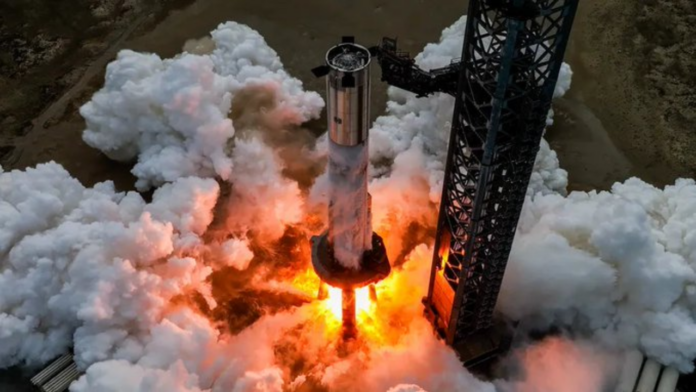SpaceX is gearing up for its next major milestone with Starship Flight 7, scheduled for launch on January 10th from its Texas base. With fresh approval from the Federal Aviation Administration (FAA), this mission signals a crucial step forward for the ambitious project. The highlight of this flight will be a daring attempt to catch the Super Heavy booster using the launch tower’s enormous “chopsticks,” a feat that could redefine how rockets return to Earth.
Securing FAA clearance well in advance, the SpaceX team appears more confident than ever. FAA official Coleman commended the swift approval process, hinting at an efficient collaboration between the agency and the private aerospace giant. This approval follows intensive testing, including engine checks for both the Starship and its towering Super Heavy counterpart. These preparations underscore the high stakes for this mission, which serves as a precursor to SpaceX’s broader aspirations for interplanetary travel.
While the January mission centres on an ocean splashdown, the attempt to recover the Super Heavy booster marks an important second effort to perfect this complex manoeuvre. Success could significantly lower the cost of space exploration by making reusable rockets a practical reality, a key element of SpaceX’s long-term vision.
Starship’s progress carries implications far beyond this single launch. NASA has its sights set on using Starship for lunar missions as early as 2027, including crewed landings that would represent a new era in space exploration. For SpaceX, these missions also lay the groundwork for its even more ambitious goals, such as sending humans to Mars. Each test, including Flight 7, represents a learning opportunity to refine the technology that will make these visions possible.
With the countdown to January 10th ticking away, SpaceX’s engineers remain focused on the challenges ahead. Every detail, from the ignition sequence to the attempted booster recovery, will be scrutinised. Starship Flight 7 promises to be not just a spectacle for space enthusiasts but a pivotal moment for the future of human space exploration.


